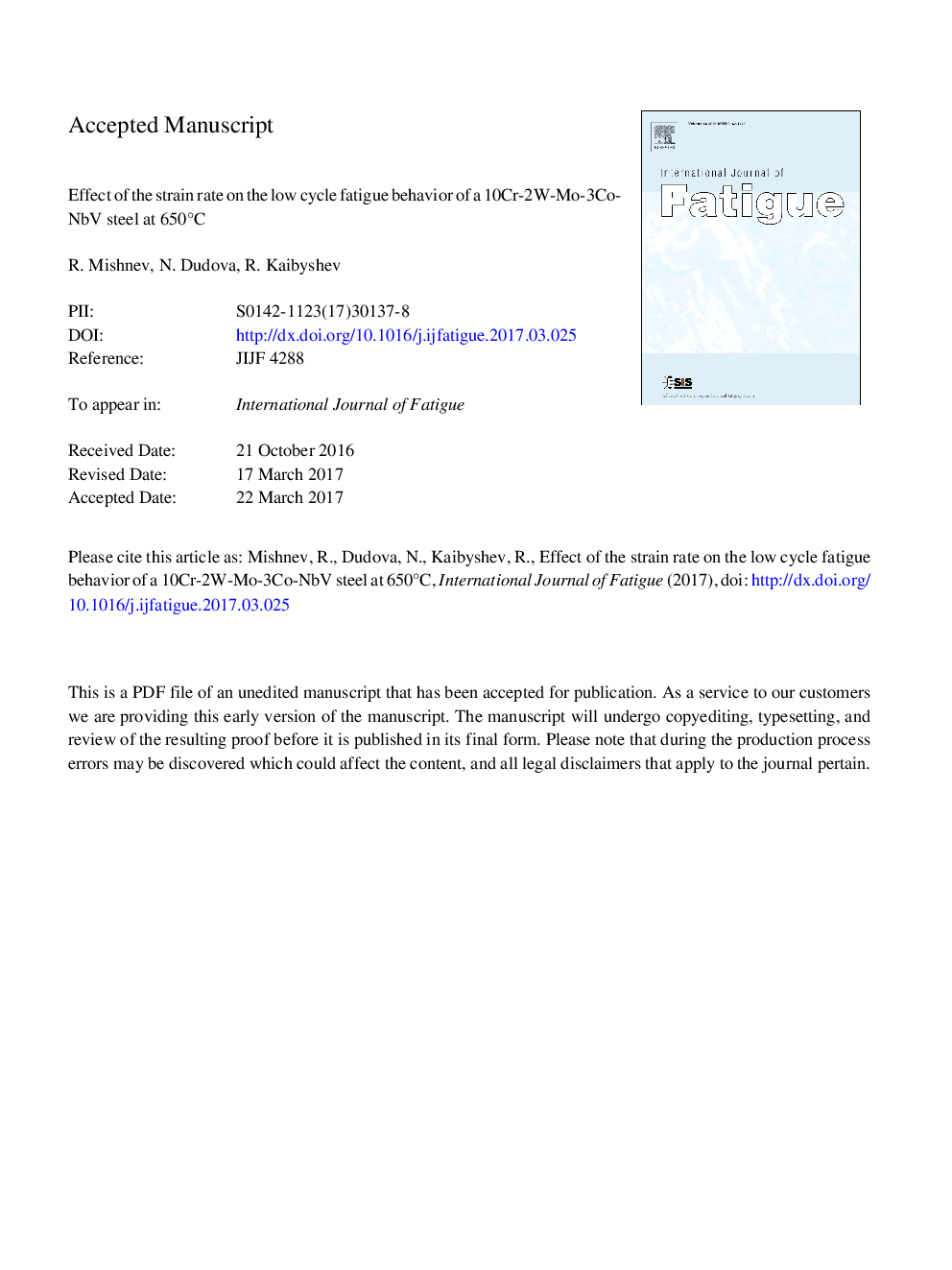| Article ID | Journal | Published Year | Pages | File Type |
|---|---|---|---|---|
| 5015123 | International Journal of Fatigue | 2017 | 35 Pages |
Abstract
The effect of a strain rate varying from â¼10â3 to â¼10â5 sâ1 at a strain amplitude ranging from ±0.2% to ±0.6% on the low cycle fatigue (LCF) behavior and the microstructure of a 10%Cr-2%W-0.7%Mo-3%Co-NbV steel with 0.008 wt.% B and 0.003 wt.% N additions was studied at a temperature of 650 °C. Decreasing the strain rate and increasing the strain amplitude was demonstrated to reduce the resistance of the 10%Cr steel to cyclic softening due to facilitating the transformation of the tempered martensite lath structure (TMLS) to a subgrain structure. The strong effect of the strain rate on the LCF behavior was attributed to the dynamic strain aging phenomenon that was represented by the stress serrations on the hysteresis loops, the positive temperature dependence of the cyclic strain hardening exponent nâ² and the cyclic strength coefficient Kâ² in the Morrow equation. The fatigue lifetime curves at all tested strain rates and strain amplitudes could be described using the Basquin-Manson-Coffin relationship.
Related Topics
Physical Sciences and Engineering
Engineering
Mechanical Engineering
Authors
R. Mishnev, N. Dudova, R. Kaibyshev,
